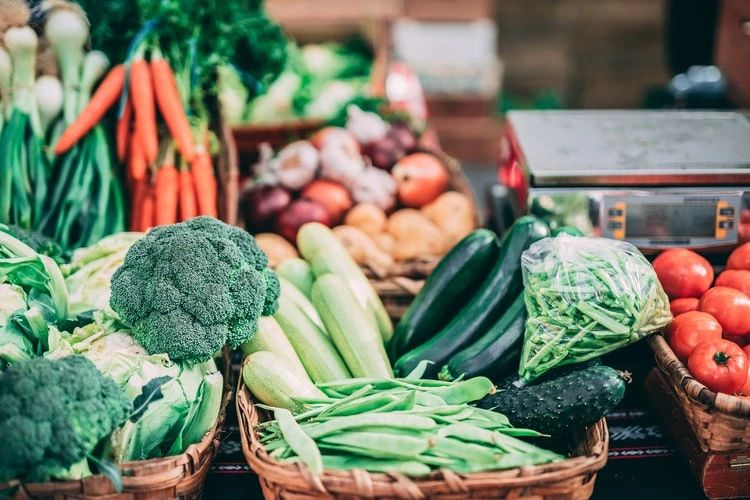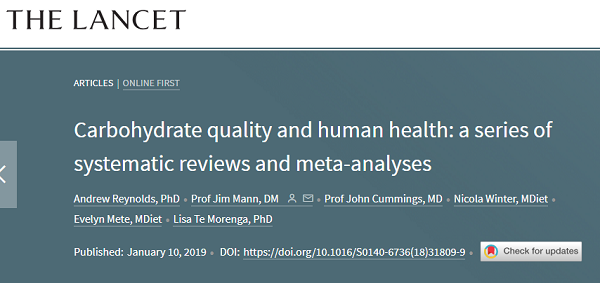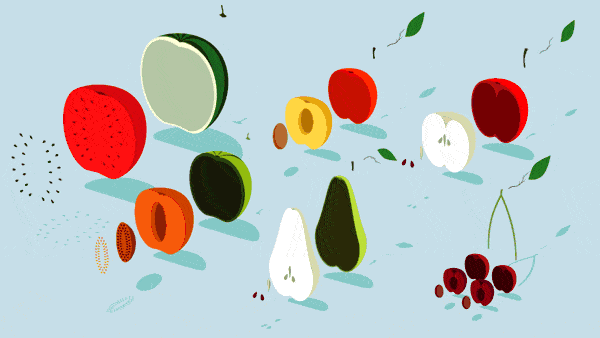
Dietary fiber is known as the “seventh most important nutrient” for human beings. From the “crude fiber” that was useless in the eyes of people in the early years to the hot star in the nutrition circle, it has continuously changed the public’s cognition. The well-known medical journal The Lancet once named and praised dietary fiber and related it to the “longevity” of human beings. But as people pursue taste and make food more refined, its intake has frequently been in a hurry.

How does dietary fiber conquer your body? How to supplement scientifically?
Dietary fiber: a nutrient for longevity
According to a study published in The lancet, dietary fiber intake amount is related to human longevity.

A total of 185 epidemiological studies and 58 clinical trials on dietary fiber and health were collected from Otago University in New Zealand. They have found:
Adequate intake of dietary fiber can reduce all-cause mortality, cardiovascular and cerebrovascular disease-related mortality, and the incidence of many chronic diseases including diabetes.
In short, a daily intake of 25-29 grams of dietary fiber is conducive to longevity.
So the question is, what is dietary fiber?
According to experience, dietary fiber is the part of plant food that is coarse and hard to chew and digest, such as the skin of grain and fruit, the tendon of vegetables, etc.
In the scientific definition, dietary fiber refers to the carbohydrate substances in plants that cannot be digested and utilized by human body.
Its main component is non starch polysaccharide, which comes from the cell wall of plants. After entering the human body, it can not be digested and absorbed by the gastrointestinal tract, nor can it produce energy.
Dietary fiber can be divided into insoluble fiber and soluble fiber
Insoluble fiber
It mainly includes cellulose, lignin and part of hemicellulose.
It can increase the volume of food by absorbing water and ferment in the large intestine, thus affecting the function of the large intestine.
Soluble fiber
It mainly includes pectin from fruits, gums, viscoses and some hemicellulose (dextran) in seaweed and plant exudates.
It can affect the absorption of glucose and lipid in the small intestine, and has gel property, which can increase the thickness of food.
4 advantages make it popular
What are the advantages of dietary fiber that can’t be absorbed and doesn’t provide energy?

Relieve constipation and prevent bowel cancer
Some human experiments have proved that eating fruits and vegetables or eating wheat (whole wheat) can relieve constipation, because the fiber in these foods can increase the weight of feces and make feces excrete faster, so as to relieve constipation and reduce the chance of absorbing carcinogens in the intestine.
In addition, dietary fiber can also help to adhere to carcinogens, improve the flora in the large intestine to prevent cancer. Therefore, dietary fiber is also known as “the cleaners in the body”.
Prevention and treatment of obesity
There are many reports about the relationship between dietary fiber and obesity. In the 1980s, some experiments proved that a certain amount of dietary fiber can reduce body weight by 24% ~ 36%.
Many studies have shown that dietary fiber supplementation can reduce energy intake, especially for obese people.
The reason may be that dietary fiber can increase chewing time, satiety and reduce digestibility.
Lowers blood glucose
Many studies have confirmed that dietary fiber supplements or foods rich in dietary fiber can reduce blood sugar.
This effect mainly comes from soluble dietary fiber, because it can form a very viscous substance in the stomach, thus affecting the absorption and utilization of glucose, so that postprandial blood glucose will not rise suddenly.
In 1979, the American Diabetes Association recommended dietary fiber as one of the ways to treat diabetes.
Lower blood cholesterol
A series of literature reports show that pectin and other viscous polysaccharides can reduce the body’s absorption of dietary cholesterol, which has a certain effect on reducing blood cholesterol.
What foods is dietary fiber hidden in
Adults should intake 25 ~ 30g dietary fiber every day.

There are three main types of foods rich in dietary fiber
1. Whole grains, beans and potatoes
Such as brown rice, oats, chickpeas, red beans, mung beans, etc.
The content of dietary fiber per 100g rice is only 0.7G (mainly refers to insoluble dietary fiber, the same below), which is much less than fresh corn (2.9g / 100g), naked oats noodles (4.6g / 100g) and black rice (3.9G / 100g).
Miscellaneous beans and potatoes are also rich in dietary fiber, such as red beans (7.7g / 100g), mung beans (6.4g / 100g) and sweet potatoes (1.6g / 100g).
2. Vegetables and fruits
Fresh Lentinus edodes (3.3 g / 100 g), Flammulina velutipes (2.7 g / 100 g) and Auricularia auricula (2.6 g / 100 g) are the best ones rich in dietary fiber.
The performance of fresh beans is also excellent, such as 4 grams of dietary fiber per 100 grams of fresh soybeans, 3.1 grams of fresh broad beans and 3 grams of fresh peas. Garlic stalk (2.5g / 100g), water bamboo (1.9g / 100g), asparagus (1.9g / 100g) and spinach (1.7g / 100g) also contain more dietary fiber, so it is better to choose these vegetables to supplement them.

There are also many fiber experts in fruits, such as Korla Pear (6.7g / 100g), pomegranate (4.8g / 100g), mulberry (4.1G / 100g), kiwi fruit (2.6g / 100g), etc. The soluble dietary fiber in oranges, grapes, peaches and strawberries is about 1g / 100g. It is also recommended to eat it often.
The elderly or children with bad stomach can steam the fruit before eating, and the dietary fiber will not be affected. It should be noted that many people like to drink juice, but when juicing, they will filter out the dietary fiber (fruit residue), which greatly reduces the effect.
3. Nuts, soybeans
Almond (18.5 g / 100 g), black sesame (14 g / 100 g), hazelnut (9.6 g / 100 g), pine nut (12.4 g / 100 g) are the fiber kings in nuts.
There are at least 5 grams of dietary fiber in two kinds of soybean, but in the processing of soybean products, most of them need to be washed and filtered to remove the residue, resulting in the loss of a lot of dietary fiber.
Soybean milk without filter residue can retain most of the dietary fiber, and the dietary fiber content of a cup of 200 ml soybean milk is about 1.5 G.
A formula to help people supplement dietary fiber
How can we supplement enough dietary fiber? Nutrition experts recommend a formula.
30g dietary fiber ≈ 50 ~ 150g Quan Gu Za Dou + 500g vegetables + 250g fruits + 10g nuts (kernel)
On this basis, it is easy to reach the recommended intake of 30g a day by adding some dietary fiber in fine grains, bean products and potatoes.

For example: 30 g dietary fiber ≈ whole grain (50g corn, 50g oats) + miscellaneous beans (50g red beans) + vegetables (250 g spinach, 100g Dutch beans, 100g carrots, 50g mushrooms) + fruit (150 g kiwi fruit, 100g Apple) + nuts (10 g black sesame).
●More kinds of staple foods
With the progress of modern production technology, rice and flour become more and more refined. Although the food tastes more delicate, a lot of dietary fiber is lost.
It is recommended to take 50-150 grams of whole grains and beans and 50-100 grams of potatoes every day.
●More vegetables
Vegetables are the big that store dietary fiber, and many vegetables have high dietary fiber content. It is recommended to eat 300-500 grams of vegetables a day.
●Having fruit everyday
Fruit is juicy and has good taste. Having fruit can increase appetite and is a good way to supplement dietary fiber.
Adults should eat 200-350 grams of fruit a day. The person who has a gastrointestinal problem can reduce the amount or steam some fruits properly.
●Having 10g nuts
The oil content of most nuts is higher than 40%. Eating too much is easy to cause excess energy. Therefore, it is recommended to eat about 10 grams a day.
Avoid three mistakes
The type of dietary fiber is various, and the intake should be appropriate. There are three misunderstandings in the process of dietary fiber supplement.

Myth 1
The food rougher the taste, the more fiber content
If the taste is obviously rough, it can only show that the content of insoluble dietary fiber is high, but it can not show that the total dietary fiber content is high.
Such as oats, pears, apples, kiwifruit, bacteria and algae, although the taste is not so rough, in addition to a certain amount of insoluble dietary fiber, it also contains a lot of soluble dietary fiber, which has a good effect on reducing blood sugar and blood cholesterol.
Myth 2
The more dietary fiber intake, the better
First of all, a large amount of dietary fiber, especially insoluble dietary fiber, will increase the burden of gastrointestinal tract, resulting in abdominal distension, indigestion and other problems.
Secondly, excessive intake of dietary fiber may affect the absorption of some trace elements.
Moreover, if dietary fiber is not cooked soft enough, the mechanical friction generated when it passes through the digestive tract will damage the gastrointestinal mucosa and increase the risk of gastrointestinal diseases.
Adults take 25 ~ 30g dietary fiber every day;
People who suffer from gastrointestinal problem take half amount of the dietary fiber.
The elderly, children and other people with weak digestive ability should cook the food rich in dietary fiber until it is soft and rotten.
The protein in meat and eggs can not only timely repair the damaged gastric mucosa, protect the gastrointestinal tract, but also make up for the lack of dietary fiber hindering the absorption of some nutrients.
Myth 3
Cooking destroys dietary fiber
Vegetables and coarse grains will become soft and taste better after cooking, but heating will not affect the function of dietary fiber.
Therefore, you don’t have to eat vegetables raw to get dietary fiber, just have them according to your favorite taste.
Comments